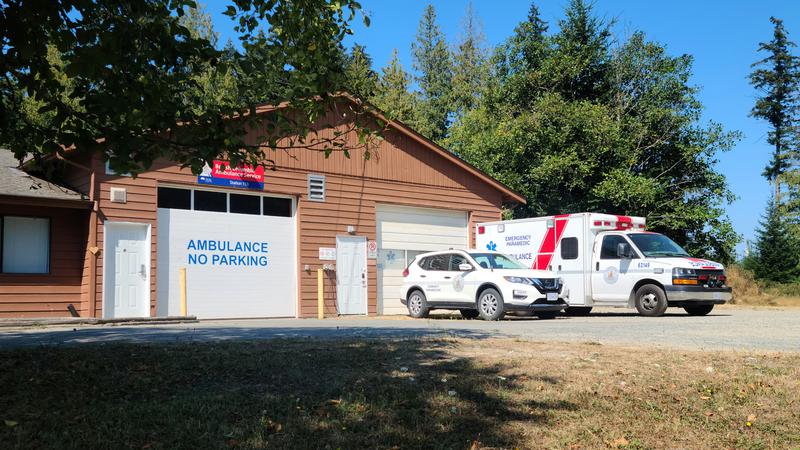GABRIOLA ISLAND — The days of delayed ambulance response, and an increasing burden on volunteer firefighters, appear to be coming to an end.
A new staffing and response model was unveiled by B.C. Emergency Health Services (BCEHS) and the provincial government on Thursday, Nov. 9, shifting paramedics on Gabriola Island to an “alpha” model, meaning more reliable 24/7 staffing and 911 response.
Gabriola is one of 21 communities across B.C. to receive the upgrade, while another 39 communities will see some improvement as well with 271 full-time positions to be added province-wide.
“[Thursday’s] announcement by BCEHS is an important step toward providing more equitable access to care for people living in rural and remote communities, and better compensation and work environments for paramedics,” health minister Adrian Dix said in a statement.
BCEHS defines an “alpha model” as one where paramedics will be “in the station on duty three times more than with the existing model”.
At least eight full-time paramedics will be assigned to the station, with staff on duty 24 hours a day.
It replaces the scheduled on-call (SOC) system, which saw paramedics effectively work 72 hours straight.
As of August 2022, the ambulance station on the Island was staffed by four members working the SOC system, two community-based paramedics providing non-emergency home visits, and another four members working casual hours.
A combination of the SOC system, along with limited numbers of actual working paramedics on Gabriola Island often meant long waits for a response or extra work for local firefighters.
Gabriola Fire Rescue crews were often tasked to handle serious medical calls or transport patients to the hospital in Nanaimo.
“This is a fundamental change in how we provide paramedic services in these communities and will address how we respond to 911 calls, how we recruit and retain paramedics to work in smaller communities, and most importantly, how we can provide better care to our patients,” Jason Jackson, president of Ambulance Paramedics of B.C., said.
Additional staffing will come through recruitment, as well as transitioning some currently on part-time hours into full-time positions.
Of the other 39 communities, 25 will move to a “mix shift model” which will see eight regular part-time staff and 16 hours of on-duty service daily, while the remaining 14 will go to a “kilo model” with a full-time permanent unit chief and flexible staffing options to encourage local recruitment.
More information and a full list of included communities is available here.
Local news. Delivered. Free. Subscribe to our daily news wrap and get our top local stories delivered to your email inbox every evening
info@nanaimonewsnow.com
On Twitter: @NanaimoNewsNOW












